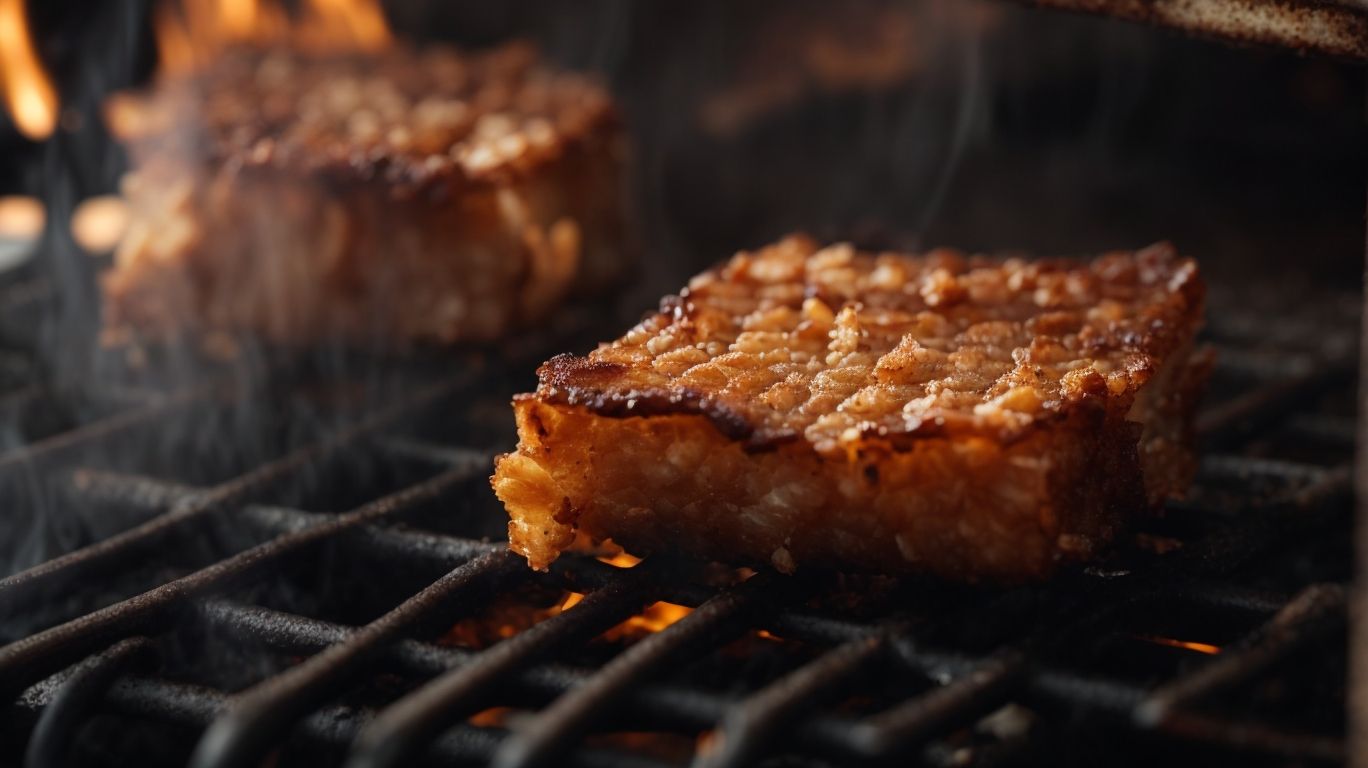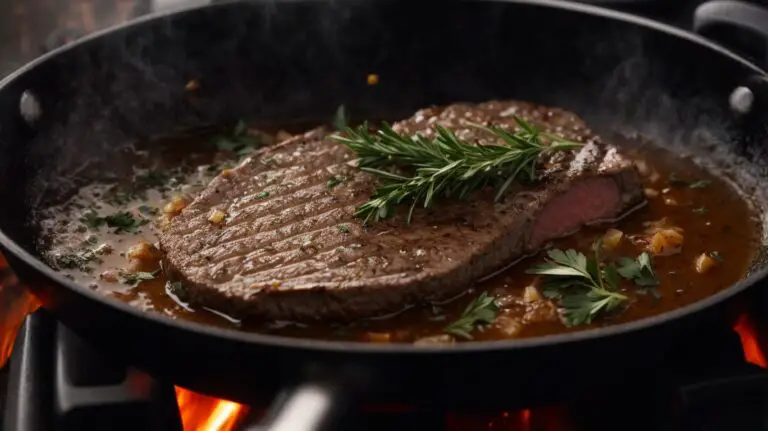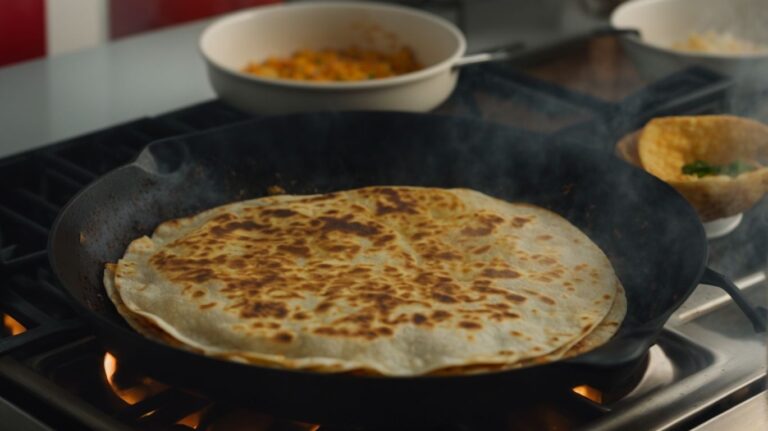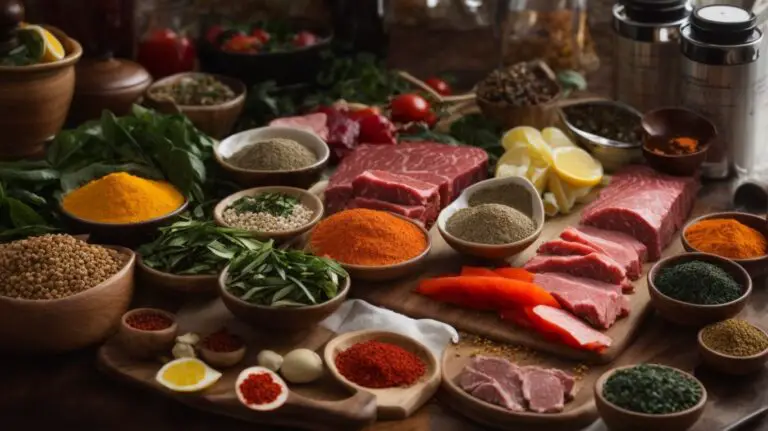How to Cook Pork Crackling Under the Grill?
Are you a fan of crispy, crunchy pork crackling?
In this article, we will dive into the world of pork crackling – what it is, why it’s so popular, how to prepare it, and how to cook it perfectly under the grill.
From selecting the right cut of pork to seasoning and grilling techniques, we will provide you with all the tips and tricks you need to achieve that perfect crackling every time.
So, get ready to tantalize your taste buds and impress your guests with this delicious dish!
Key Takeaways:
What is Pork Crackling?
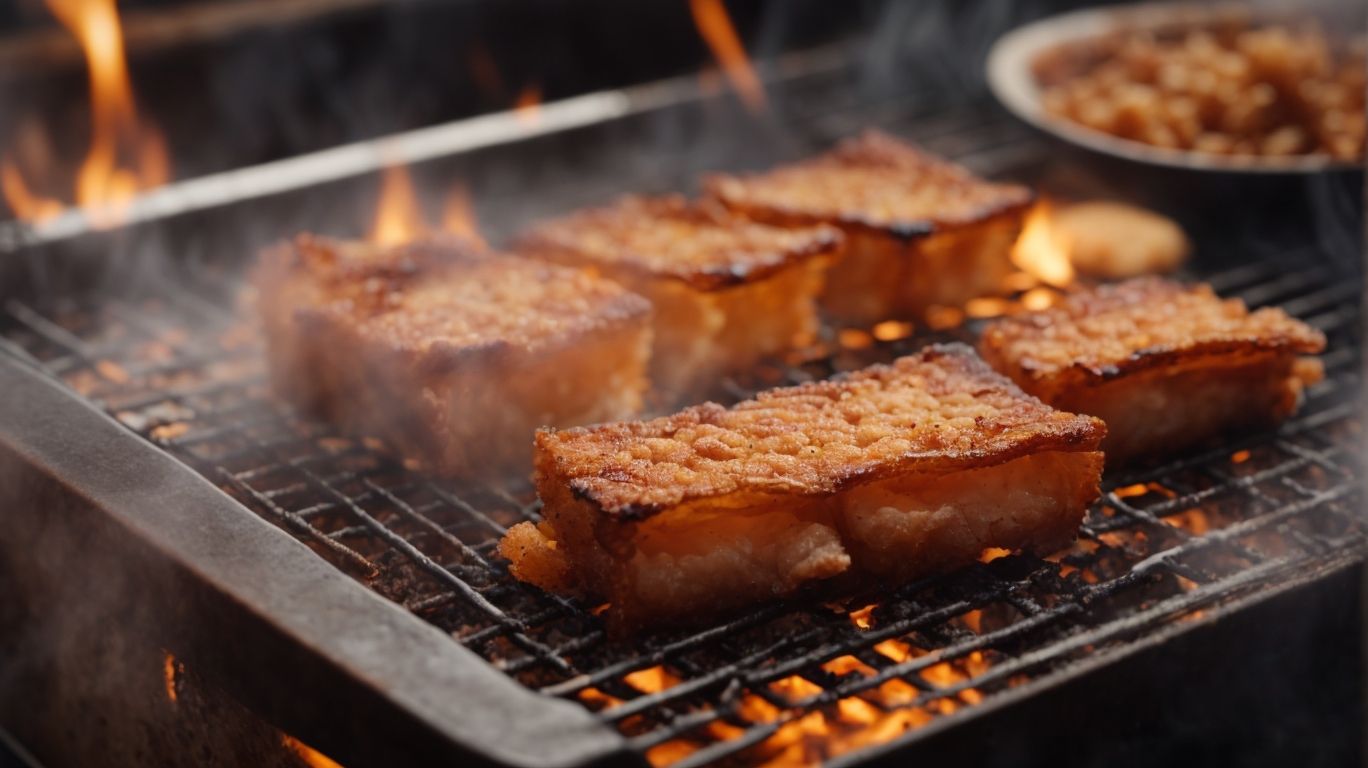
Credits: Poormet.Com – Daniel Clark
Pork crackling, also known as pork rind or crackling, is a popular dish made from the crispy top layer of pork skin or belly. It is achieved by cooking the pork skin until it turns crunchy and golden brown.
This crispy delicacy is enjoyed in various cultures worldwide, each offering a unique twist in flavor and seasoning. For instance, in Spain, Chicharrón is a popular treat made by deep-frying pork belly strips seasoned with spices like paprika and garlic. In the United States, pork crackling is often seasoned with salt and pepper or served with barbecue sauce to add a tangy kick.
The key to achieving the desired crunchiness lies in the preparation process. Before cooking, the pork skin is typically scored to help render the fat and allow the skin to puff up during cooking. Slow cooking methods, such as roasting or deep-frying, are commonly used to ensure an even, crispy texture throughout.
What Part of the Pig is Used for Pork Crackling?
Pork crackling primarily uses the skin or belly of the pig, as these parts contain the necessary fat and skin composition to achieve the desired crunchy texture.
In terms of selecting the perfect cut for pork crackling, the skin-on pork belly is a popular choice due to its ideal combination of fat content and skin quality. The thick layer of fat beneath the skin helps render it during cooking, resulting in a crispy and crunchy texture. Cuts such as pork shoulder or loin can also be used for crackling, but they may require more careful preparation and attention to achieve the same level of crispiness as the belly. Ensuring that the skin is dry and well-scored before cooking is crucial for successful crackling, allowing the fat to render and the skin to puff up perfectly.
Why is Pork Crackling Popular?
Pork crackling is popular due to its irresistibly crispy texture, achieved through precise cooking methods that involve the right balance of heat and timing.
The crackling is a key element that elevates the overall dining experience, providing a satisfying crunch with each bite. As the pork rind transforms into a golden, crunchy delight, it releases an aroma that tantalizes the senses and prepares one for the flavorful burst to come. The crackling’s appeal lies not just in its texture, but also in the contrast it brings to the tender meat it accompanies. Whether enjoyed on its own or as a complementary side, pork crackling adds a delightful element of indulgence to any meal.
How to Prepare Pork Crackling?
Preparing perfect pork crackling involves steps such as scoring the skin, seasoning with salt, and ensuring the skin is dry before cooking to achieve optimal crispiness.
Once the skin of the pork has been thoroughly scored, rub a generous amount of coarse salt into the cuts, allowing it to penetrate the skin. This not only helps in seasoning the entire piece of meat but also draws out moisture from the skin, essential for achieving that desired crunchiness. It is crucial to let the salted pork sit uncovered in the refrigerator for a few hours or overnight. This process aids in the further removal of moisture, resulting in a drier skin, which is key for creating a crispy, golden crackling when roasted. Dabbing the skin with paper towels before placing it in the oven will help ensure excess moisture is eliminated, giving you that satisfying crunch upon biting into the crackling.
What are the Ingredients Needed for Pork Crackling?
The essential ingredients for making pork crackling include salt for seasoning, oil for cooking, and a dry skin surface achieved through scoring and proper fat layer preparation.
Another crucial ingredient for a perfect pork crackling is a touch of apple cider vinegar, which not only aids in tenderizing the meat but also imparts a subtle tanginess.
Black pepper adds a depth of flavor and a hint of spiciness to balance the richness of the pork belly.
Rosemary can be used to infuse an earthy aroma into the crackling, enhancing its overall profile.
How to Choose the Right Cut of Pork for Crackling?
Selecting the right cut of pork, such as pork belly, is crucial for achieving the best crackling results, as recommended by crackling experts and culinary enthusiasts.
In terms of crackling, the consensus among experts is that cuts with a good ratio of fat to meat tend to produce the most delightful crispy texture. Pork belly, with its perfect balance of fat content and meat, is widely regarded as the top choice for achieving that coveted crunchy crackling. The layers of fat underneath the skin render down during cooking, creating a crisp and indulgent finish that is hard to resist.
While pork shoulder and loin can also deliver tasty results, they often lack the ideal fat content needed for exceptional crackling. This makes pork belly stand out as a favorite among seasoned chefs and home cooks alike. The preparation methods for each cut can vary, but the general rule of thumb remains the same: a well-marbled piece of pork belly will almost certainly guarantee a crackling success story.
How to Cook Pork Crackling under the Grill?
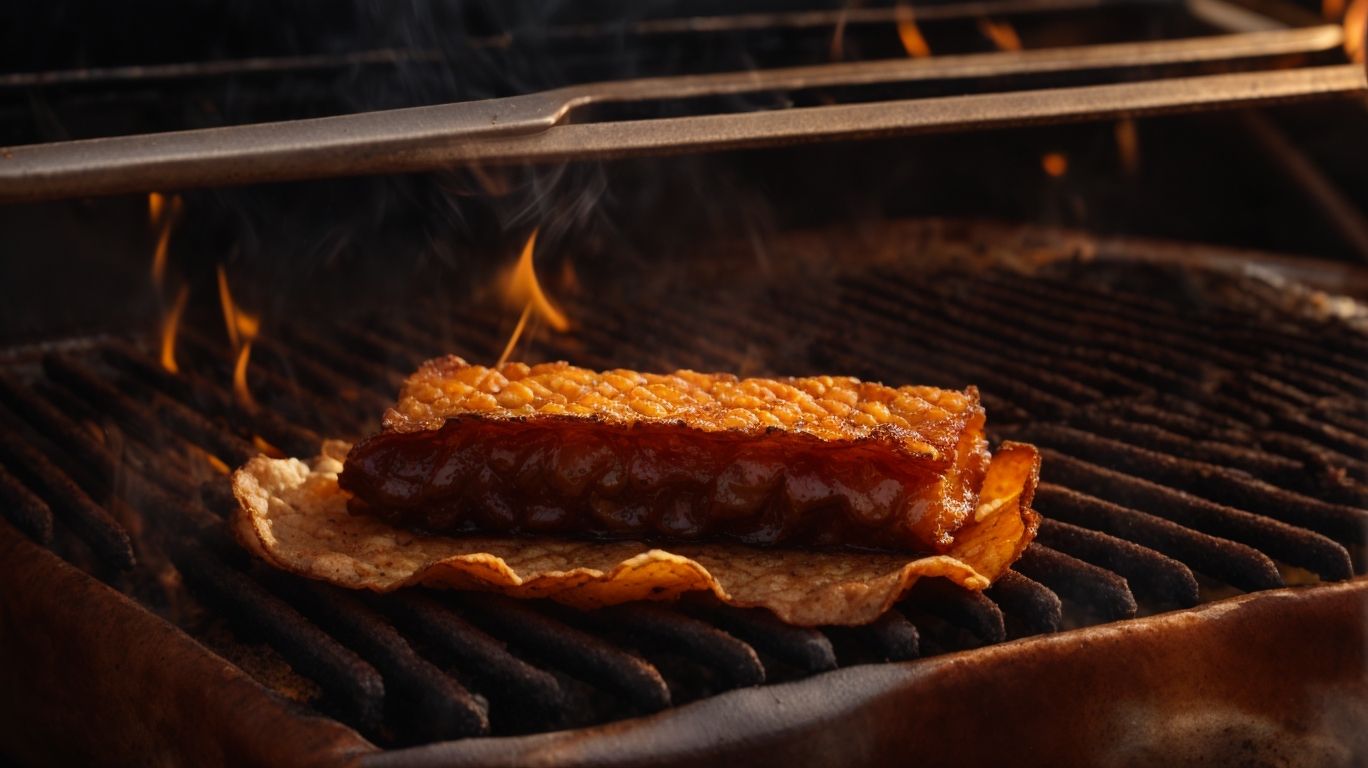
Credits: Poormet.Com – Daniel Taylor
Cooking pork crackling under the grill involves a meticulous process to ensure the fat layer renders properly, the rind turns dry, and the result is perfectly crispy crackling.
After scoring the rind, sprinkle it generously with salt, which will help draw out moisture and assist in achieving that desired crispness. Place the pork on a wire rack in a baking tray to elevate it, allowing air to circulate all around. Preheat the grill to high heat and position the tray close enough so the heat can effectively penetrate the skin, but not too close to avoid burning.
Step 1: Preparing the Pork
The initial step in preparing pork for crackling is to ensure a fresh slice with a dry rind and a ductile fat layer for optimal cooking and texture.
When selecting the pork slice, look for a piece with a good amount of fat evenly distributed throughout the meat, as this will melt during cooking, adding moisture and flavor to the dish, while the dry rind will crisp up beautifully in the oven.
The distinct fat layers play a crucial role in creating a tantalizing contrast between the crispy crackling on top and the succulent meat below, providing a delightful textural experience for each bite.
Step 2: Seasoning the Pork
Seasoning the pork with salt is a critical preparation step to draw out moisture, ensure a dry skin surface, and enhance the flavor profile of the crackling.
When salt is generously applied to the pork skin, it acts as a powerful desiccant, extracting moisture from the skin which is crucial for achieving that coveted crispiness. The salt helps in creating a dry surface on the skin, essential for optimal crackling formation during cooking. The process of salting not only aids in moisture removal but also plays a vital role in flavor development, as it penetrates the meat, infusing it with a savory undertone that elevates the overall taste of the crackling.
Step 3: Preparing the Grill
Preparing the grill involves ensuring optimal heat levels and using the appropriate method recommended by experts such as Leiths for achieving the desired crackling texture.
One crucial step in the process is to preheat the grill to the recommended temperature, typically around 300-350°F for pork crackling. This ensures that the meat cooks evenly and the fat renders properly to create that coveted crispy exterior. Consider using a two-zone setup on the grill, with direct heat on one side and in-direct heat on the other, allowing you to sear the meat before slow-roasting it to perfection.
Another expert tip is to score the pork skin to help the fat render effectively and create those delightful crunchy bits. When placing the meat on the grill, ensure the skin side is facing up to allow it to crisp up nicely. Monitor the temperature consistently and adjust the airflow and heat levels as needed to maintain optimal cooking conditions.
Step 4: Cooking the Pork under the Grill
Cooking the pork under the grill requires precise timing and temperature control to achieve a crunchy and dry crackling texture, often enhancing the process with expert-recommended blow-dried techniques for optimal results.
Before placing the pork under the grill, it is crucial to score the skin to allow the fat to render easily, resulting in that delightful crunch. Rubbing the salt onto the skin helps draw moisture out, aiding in achieving the desired crispy finish. Ensuring that the grill is preheated to the right temperature is key; a high temperature initially is vital to puff up the skin, followed by reducing the heat to cook the meat through. Regularly basting the pork with juices or oil during the process adds flavor and moisture, preventing the crackling from over-drying.
Step 5: Checking for Doneness
Checking for doneness involves observing visual cues such as a frilly little pile of fat, an autumn leaf-like appearance, or a blistering top, indicating the porky Aero texture synonymous with perfectly cooked crackling.
In terms of the ideal pork crackling, it should have a crunchy texture that gives way to a satisfying crispiness in every bite. The fat should have rendered to a point where it glistens and is perfectly golden-brown, showcasing a balance of crispy edges and soft, melt-in-your-mouth centers. The surface should sport irregular bubbles and blistering, signifying that the fat underneath has achieved the desired Aero quality, ensuring a delightful blend of crisp and tender mouthfeel.
Tips and Tricks for Perfect Pork Crackling
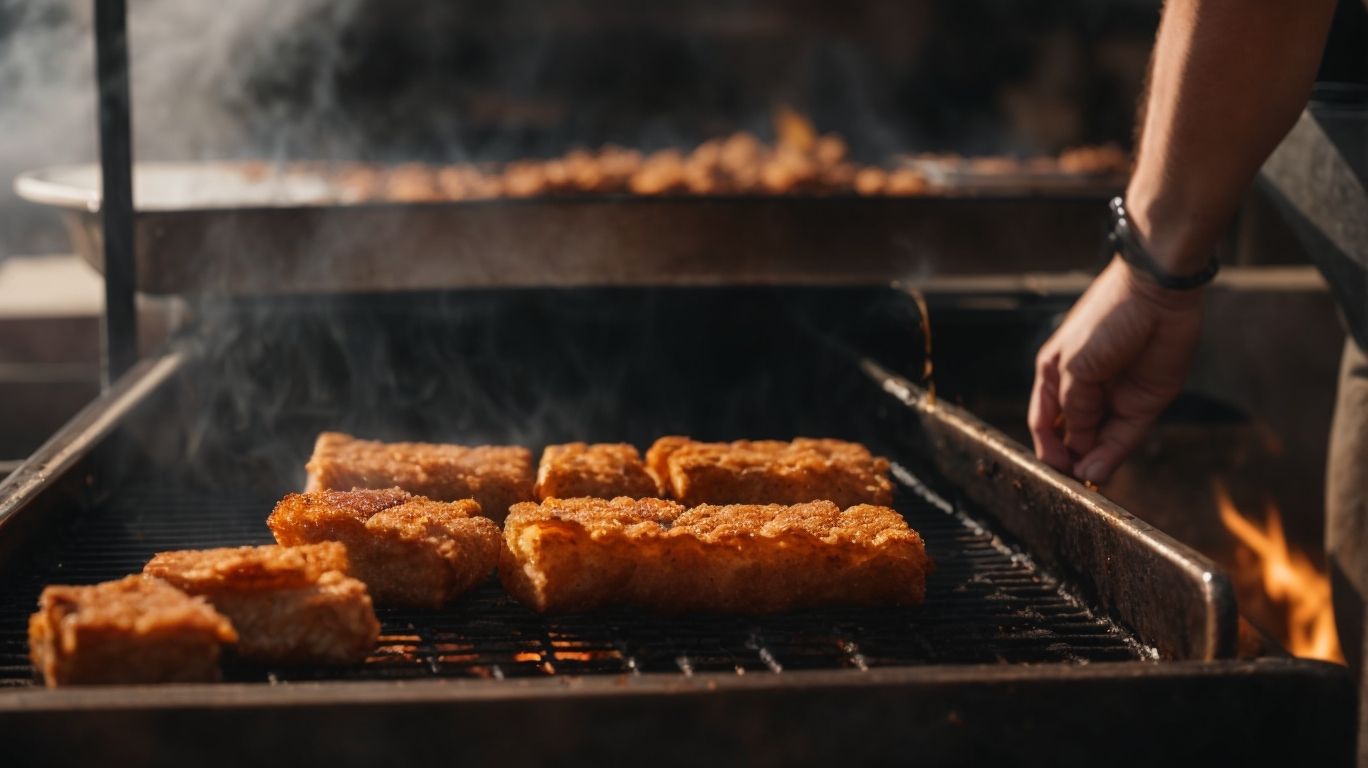
Credits: Poormet.Com – David Garcia
Achieving perfect pork crackling requires attention to detail, such as scoring the rind with a Stanley knife, managing fat crunch, and controlling moisture levels to enhance the overall pork fat texture.
Scoring the rind of the pork is a crucial step in creating that sought-after crispy texture. Make sure to cut through the fat but not into the meat below to allow for optimal fat rendering during the cooking process. Consistent scoring ensures even cooking and helps the fat to bubble and crisp up beautifully. In terms of fat management, selecting the right cut of pork, such as pork belly, with a good balance of fat and meat is key for a successful crackling. Properly patting the rind dry and allowing it to air-dry in the fridge before roasting can also enhance the crackling formation. Controlling moisture levels in the cooking environment, whether by preheating the pan or adjusting the oven temperature, can make a significant difference in achieving that perfect crunchiness.
What to Serve with Pork Crackling?
Pork crackling complements dishes such as pork slices or boneless pork by adding a meaty hope flavor and texture, while its crunchy crackling can absorb and enhance meat juices for a flavorful experience.
When serving pork crackling, it’s essential to consider the best options that can elevate your meal to the next level. One popular way to enjoy this crispy treat is to pair it with roasted pork loin, where the crackling’s savory crunchiness takes the dish to new heights of indulgence. You can also opt for serving pork crackling alongside slow-cooked pulled pork, allowing the crackling to absorb the succulent juices of the meat, creating a harmonious blend of flavors and textures.
Conclusion
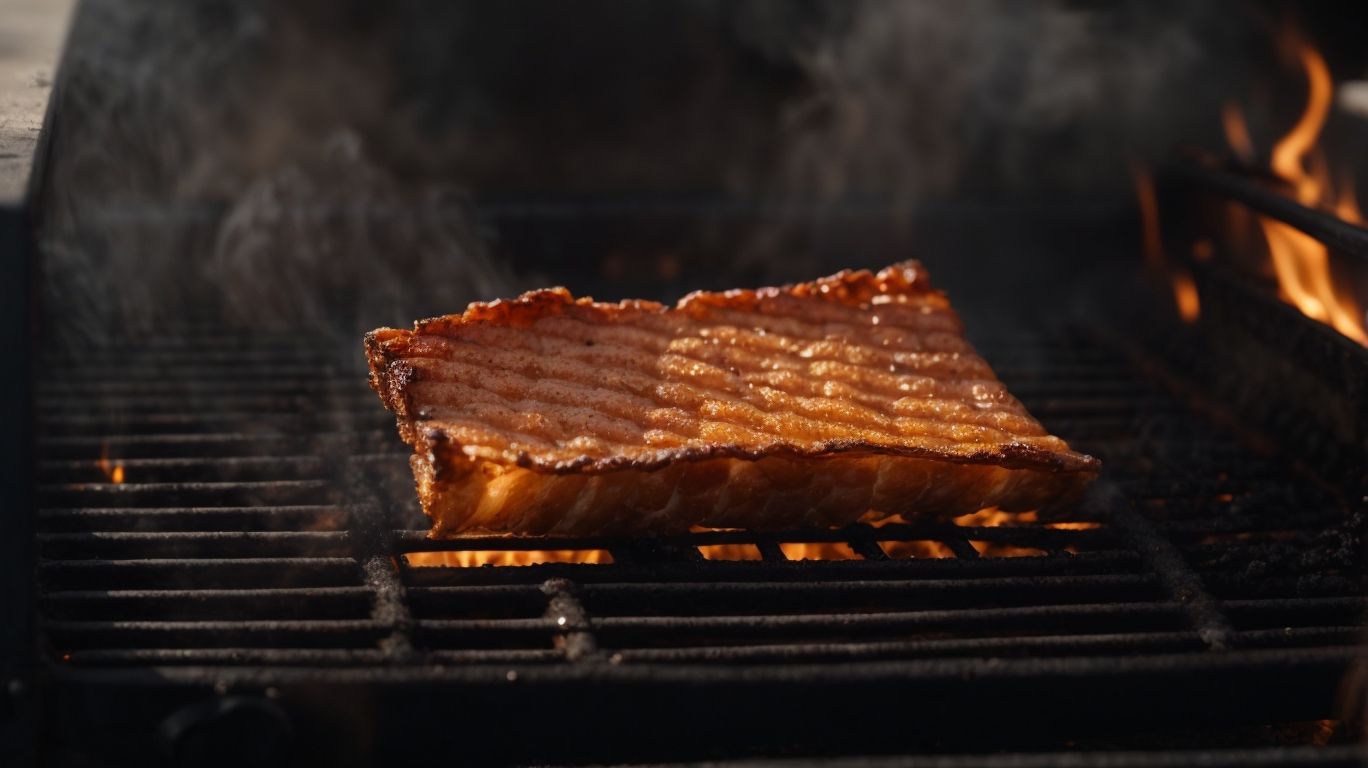
Credits: Poormet.Com – Christopher Davis
In conclusion, mastering the art of pork crackling involves understanding the ultimate crackling cut, following crackling consensus tips, and experimenting with a variety of top 20 entities to achieve the perfect crunch every time.
One crucial factor in achieving that delectable crunch is selecting the right pork cut, such as pork belly or pork shoulder, known for their ideal fat content and skin thickness. The crackling consensus advises scoring the skin, seasoning generously with salt, and ensuring a dry surface before cooking.
In terms of creating the ultimate crunch, factors such as oven temperature, cooking time, and even using specialized tools like a flattening press play a significant role. Each entity, whether it’s goose fat, olive oil, or simply seasoning with rosemary and garlic, contributes uniquely to the texture and flavor of the crackling.
Serving pork crackling hot and fresh, straight from the oven, enhances its crispiness and taste. Pairing it with complementary flavors like apple sauce or mustard can elevate the overall gastronomic experience.
Frequently Asked Questions
What is the best method for cooking pork crackling under the grill?
The best method for cooking pork crackling under the grill is to first score the skin of the pork with a sharp knife, then rub it with salt and oil. Place it under the grill with the skin facing up and let it cook for about 30 minutes, or until it is crispy and golden brown.
Can I use any type of pork for cooking crackling under the grill?
You can use any type of pork for cooking crackling under the grill, however, pork belly is the most commonly used cut because of its high fat content and thick skin which makes for perfect crackling.
Do I need to flip the pork while cooking crackling under the grill?
No, you do not need to flip the pork while cooking crackling under the grill. The skin should be facing up the entire time to ensure that it becomes crispy and golden brown.
How do I know when the pork crackling is ready?
You will know the pork crackling is ready when it is crispy and golden brown. You can also test it by tapping the skin with a fork – if it sounds hollow, then it is ready.
What temperature should the grill be set to for cooking pork crackling?
The grill should be set to a high temperature, around 425-450 degrees Fahrenheit, for cooking pork crackling. This high heat will help to crisp up the skin and create the perfect crackling texture.
Can I use any seasonings or spices on the pork before cooking crackling under the grill?
Yes, you can use any seasonings or spices you like on the pork before cooking crackling under the grill. Some popular options include garlic powder, paprika, and dried herbs, but feel free to experiment and find your favorite flavor combination.

